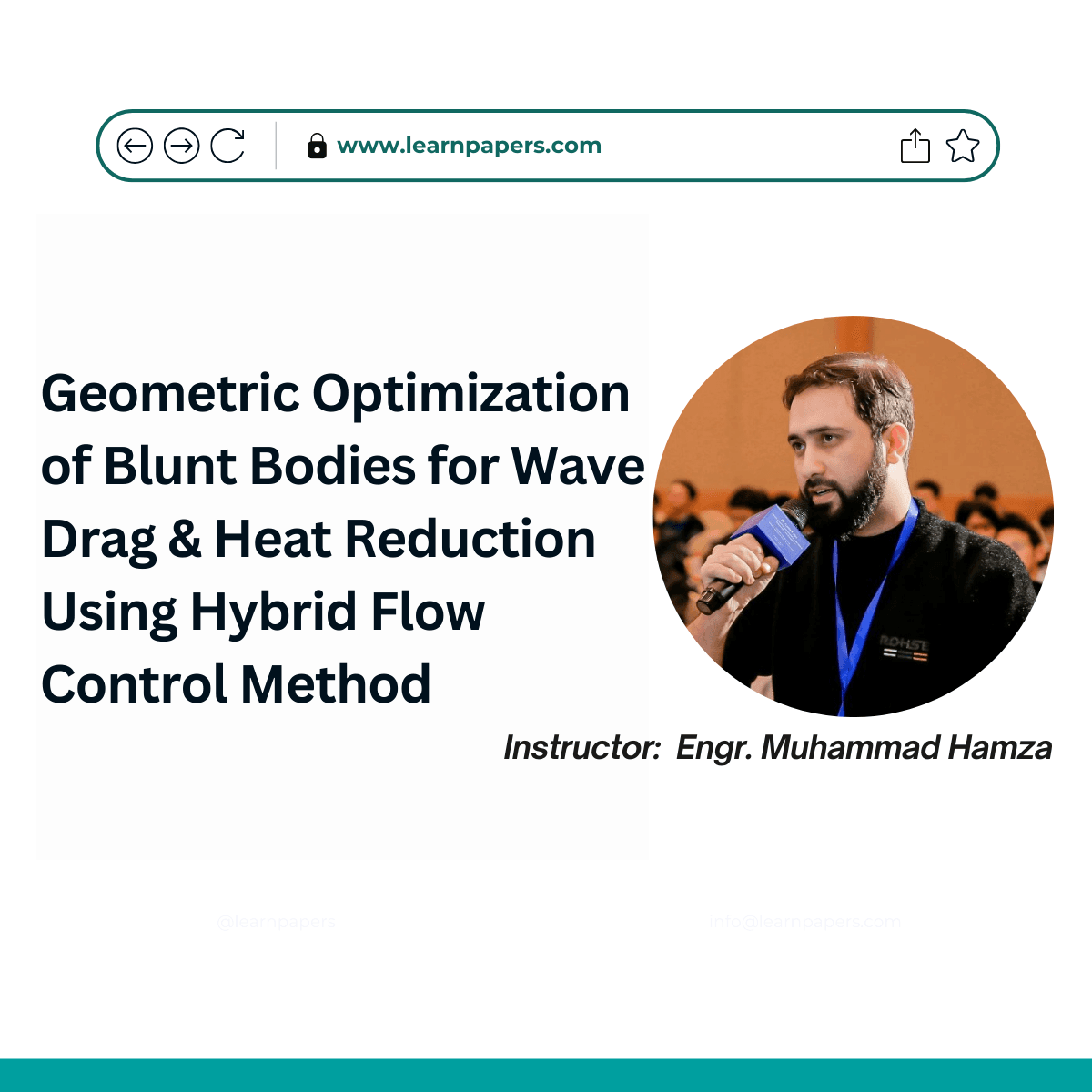Geometric Optimization of Blunt Bodies with Aerodisk and Opposing Jet for Wave Drag and Heat Reduction 🚀

About Course
Abstract
The use of passive, active, or hybrid flow control techniques is often investigated to reduce the acoustic signature, wave drag, and aerodynamic heating associated with the supersonic flow regime. This research explores passive and hybrid flow control techniques to achieve an optimal reduction in wave drag and aerodynamic heating on a blunt body using an aerodisk. While passive techniques use one or two aerospikes, hybrid techniques employ opposing jets and aerospikes. Numerical analysis is performed using Reynolds-Averaged Navier–Stokes (RANS) equations to analyze the bodies’ flow field. The statistical technique, Design of Experiments (DOE), is combined with Response Surface Method (RSM) to find the optimal configuration for four cases by generating design space. Two cases were considered for the optimization: single aerospike with and without opposing jet and double aerospike with and without opposing jet. Variables used for the design of the aerodisks were spike length and diameter, while the response variables were wave drag and normalized heat flux. The current study has established an optimum relationship between spike length and aerospike diameter located in front of the main blunt body for both single and double aerospikes. The study’s results suggest that a double aerodisk configuration is more beneficial for reducing drag and heat flux at supersonic speed than a single aerodisk. By incorporating an opposing jet at a pressure ratio of 0.8 from the frontal aerodisk to the spiked blunt body, it can reduce drag and heat flux by 86% and 95%, respectively. Finally, numerical verification is performed for statistically optimized designs.
DOI
https://doi.org/10.3390/aerospace9120800
LearnPapers Research AerospaceEngineering SupersonicFlow FluidDynamics WaveDragReduction HeatFluxReduction Aerodynamics CFD Optimization SupersonicInnovation LearningFromExperts PeerReviewedResearch InteractiveLearning
Course Content
Module 1: Introduction to Supersonic Flow and Challenges
Module 2: Flow Control Techniques
Module 3: Optimization Method & Design of Experiment
Module 4: Geometric Modeling, Meshing and Postprocessing
Module 5: Numerical and Experimental Validation Studies
Module 6: Results and Optimization Insights
Module 7: Applications and Future Research Perspective
Student Ratings & Reviews

